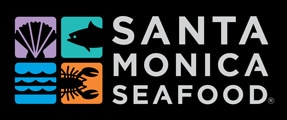Sustainability Rating:Green – Best Choice What:Perhaps the original farmed fish – and still the second most commonly raised fish in the world (carp is #1). When:Available Year-Round Where/How:Where – Honduras, Ecuador How – Farm Raised Back to Product Guide Characteristics Quality fish, raised in pristine, carefully maintained water, have a clean, fresh taste, lean meat and a firm, flaky …
Snook (a.k.a. Robalo)
Sustainability Rating: Grey-Unranked What:Snook (aka: Robalo or Sergeant Fish) has a distinct lateral line, high, divided dorsal fin, sloping forehead and a large mouth with a protruding lower jaw. This fish can be found anywhere from Central Florida to South America and the Gulf of Mexico, usually inshore in the coastal and brackish waters, along mangrove shorelines, seawalls, and bridges. When:Available …
Snapper, Vermillion
Sustainability Rating:Multiple Rankings What:The vermilion snapper or beeliner, Rhomboplites aurorubens, is a species of snapper native to the western Atlantic Ocean from North Carolina to Bermuda including the Gulf of Mexico and the Caribbean Sea to Brazil. When:Available Sporadically Year-Round Where/How:Where – USA How – Wild Caught/Longline Where – Imported How – Wild Caught/Longline Back to Product Guide …
Snapper, Silk
Sustainability Rating:Gray – Unranked What:A delicious member of the snapper family When:Available year-round Where/How:Where: Costa Rica How: Wild caught; longline Back to Product Guide Characteristics Silk Snappers can be identified by the yellow iris (Red Snapper have a red iris). They have a red body that’s slightly darker on top and have a thin yellow line running longitudinally …
Snapper, Lane
Sustainability Rating:Grey – Unranked What:A delicious member of the snapper family When:Available Spring/Summer with sporadic catches Winter/Fall Where/How:Where – Costa Rica How – Wild caught; hook and line Back to Product Guide Characteristics Lane snapper are regarded as a great eating fish – mainly because their own diet is so varied. This tasty fish feeds on crabs and …
Snapper, Colorado
Sustainability Rating:Grey – Unranked What:One of the recognized species in the Lutjanus genus of snappers. When:Sporadic availability Where/How:Where: Eastern Pacific: southern California, USA to Panama How: Wild Caught; longline Back to Product Guide Characteristics Colorado snapper is not often available – mainly due to restrictive management put in place to help manage populations. However, when we do get this …
Pompano, Florida
Sustainability Rating:grey – unranked What:Aquacultured Pompano ocean raised in Panama. When:Available year-round Where/How:Where: Laguna de chiriqui, Panama How: Farm Raised Back to Product Guide Characteristics Meat is light in color and cooks up firm, tender, and moist. Flavor is sweet, mild, rich, and distinctive. For Your Menu The simplest preparations are best since you don’t want to overpower …
Mahi Mahi
Sustainability Rating:Multiple Rankings Available What:A beautiful ocean fish found in waters around the world, mahi mahi is a surface dweller and is a popular commercially and recreationally caught species. When:Available year-round, with optimal pricing occurring October – April. Where/How:Where – Hawaii, Costa Rica, Guatemala, Ecuador, Mexico and Fiji. How – Wild-caught, longline Back to Product Guide Characteristics Chefs …
Corvina
Sustainability Rating:Grey – Unranked What:The Corvina fish is a fan favorite of the Drum or Croakers (family Sciaenidae). When:Available Year-Round Where/How:Where – Panama, Costa Rica, Ecuador, Mexico How – Wild Caught, Hook & Line Back to Product Guide Characteristics This highly prized fish offers an excellent taste that’s great for customers who enjoy Grouper or Snapper. Mild and …
Cobia
Sustainability Rating:Blue – Santa Monica Seafood Approved What:Cobia are the sole member of their scientific family, the Rachycentridae. When:Available Year-Round Where/How:Where – Panama How – Farm Raised Back to Product Guide Characteristics Cobia are delicious and a favorite of sport fishermen… The problem with catching them commercially in the wild is that they don’t school – enter aquaculture! …
- Page 1 of 2
- 1
- 2
